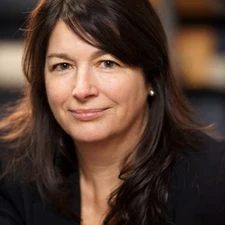Maureen E. Raymo

The 2014 Milutin Milanković Medal is awarded to Maureen E. Raymo for her intellectual leadership in palaeoceanography, her impressive landmark publications in Cenozoic climate evolution, chronology and astronomical climate forcing.
Maureen E. Raymo’s work has given names to critical, foundational ideas: the ‘uplift-weathering hypothesis’, the ‘41-thousand-year problem’, ‘Pliocene sea level paradox’, ‘the Lisiecki-Raymo δ18O Stack’ are all central themes in palaeoceanography that appear in textbooks and have their roots in Raymo’s research and intellectual contributions. Her work has shaped our understanding of the answers to these questions and her many landmark papers document her reach and influence with respect to some of palaeoclimate science’s basic questions.
Raymo’s paper on ‘The timing of major climate terminations’ is a classic. In this work, Raymo outlines a hypothesis that excess ice builds up when summer insolation at 65° N is unusually low for more than a full precession cycle and the glacial period ends with the next rise is summer insolation. Raymo has also advanced a creative explanation for the origin of the 41-thousand-year world whereby precession induces compensatory ice volume changes in the northern and southern hemisphere between 3 and 1 million years, leaving the in-phase obliquity component of insolation to dominate the record. Raymo’s 2008 review article in Nature with Peter Huybers titled ’Unlocking the mysteries of the ice ages’ is a testament to the mark she has made in understanding glacial-interglacial climate changes and her ability to tackle some of the most outstanding problems in this field.
Raymo has produced a steady stream of innovative ideas and data sets that have framed and contributed to some of the most important problems in palaeoceanography. Raymo’s stable isotope work on Deep Sea Drilling Programme Sites 607 and 609 were ground-breaking for elucidating the history of northern hemisphere glaciation and deepwater circulation history during the Plio-Pleistocene.
Raymo’s talent, shared by only the very best palaeoclimatologists, is her remarkable ability to bring widely disparate lines of evidence from geochemistry, geology and geophysics to bear on seminal problems in palaeoclimate research. In an age of progressive research specialisation, Raymo remains a model of interdisciplinary research, a truly great scholar in the very best sense of that term.
